Brno Tourism Information
Brno is the second largest city in the Czech Republic and the largest city in the historical Moravian region. Founded around the year 1000, the city acted as one of historical capitals of the region, and today is home to many institutions related to Moravian history and culture. Brno is located in a beautiful natural environment, not far from Austria. Hence there is a lot of Austrian visitors and influence. Compared to Prague, Brno is a much quieter city, with lots of places to chill and dine in a great atmosphere, where it is easy to find space to sit and queues are practically non-existent. It's a great city for culture, shopping, easy to walk around and offers a lot of open natural places to explore!
The climate enjoyed by Brno is similar to that of Prague, yet Brno is more moderate , with a mixture of fine weather and frequent short spells of rain. Most months experience a number of rainy days, with the wettest months in Brno being May, June, July and August, with temperatures reaching to top 30°C on the hottest days, but stays within 25° normally.
Rain is a prominent feature throughout the year and Brno is known to have rainy weather of some degree on around 150 days each year. However, although the summer weather in Brno can be a little damp at times, the climate is warm and there is still usually plenty of sunshine to enjoy.
Winters are quite cold, and maybe not the best time to visit as it can be freezing during the night and not over 5-8°C during the day.
For better temperatures and an ideal climate to walk around April and May would be the best months to visit.
Brno is well connected to the rest of the country by train and busses. Travelling from or to Prague is very popular to take the train, which takes just 2.5 hours. Tickets cost around 175 CZK one way (€7). To buy tickets on the Czech public trains, run by České dráhy click this link.
From Brno you can travel also by regular direct trains or trains to Vienna (Austria), and Bratislava (Slovakia). The journey to Vienna and Bratislava takes by train 1.5 hours.
Tickets to these destinations costs approximately €8. There are also many connections in the Czech Republic to other cities including Olomouc (1.5 h.), Ostrava and Northern Moravia (2 h.).
For those who want to fly from/to Brno there is a small airport close to the city. From 05:30 (6:30 on Saturdays, Sundays and public holidays) till 22:30 you can use the direct bus line No. E76. It departs accurately every 30 minutes from the Brno Main train station and goes via the Main Bus Station (it stops near the tram terminus Zvonařka) and continues directly to the Airport Brno. If you arrive at night, after those hours you can take the night bus N89. It departs every 30 or 60 minutes. The travel time from the centre to the airport is in both cases about 20 minutes. For one journey it costs 25 CZK.
When you arrive to Brno, there are trams and busses but no metro. Tickets are valid for any form of public transport, so you only need to pay attention to how long you are travelling (tickets are valid for specific amounts of time) and which zones you are travelling through. You can buy tickets from any of the yellow ticket vending machines located at various stops throughout the city, or you can purchase them at information centres, stations, and newsagents. You can even buy your ticket directly from the driver at a slightly higher price, though you need to have exact change. If you have a Czech phone number, you can also buy tickets by sending a text message or using a mobile app. To check the map of Brno with its central connections click the button below.
Brno received its city status in 1243. Surviving sieges from the Hussites in 1428 and 1430, the city also successfully defended itself from Swedish armies during the Thirty Years' War. The city flourished during the 19th century as it rapidly industrialised and its population exploded.
Today Brno is a mixture of different architectural styles, ranging from the Gothic, Baroque, Art Nouveau, and Socialist. But there is plenty to keep new visitors occupied here! Two castles are located in the immediate proximity of the city: Špilberk (a former royal castle for the rulers of Moravia dating to the 13th century, and later an Austrian military bastion), Veveří Castle (near Brno Lake). The city centre also offers a good mix of activities to do depending on your interests. Visit the Vegetable Market, go up the Burgerův dům (town hall Tower), visit museums, go shopping, dine or watch a movie in the city centre's shopping centre!
Below you find a selection of the best things to see and do in the city:
- Vegetable Market Square: For centuries, the Vegetable Market, nicknamed Zelňák, has been a place where the local citizens buy fruit, vegetables, flowers, etc. In the lower part of the square, you can enter an underground labyrinth, a unique system of underground passages and cellars from the Middle Ages. The square is dominated by a monumental Baroque fountain, called ‘Parnas’, by Johann Bernhard Fischer von Erlach. Another point of interest is Reduta, one of the oldest theatre buildings in central Europe, in front of which you will find a statue of Wolfgang Amadeus Mozart that serves as a reminder of the concert the child gave here in December 1767 when he was only 11. At the upper part of the square lies Dietrichsteinský palác (the Dietrichstein Palace), built between 1614 and 1620 and designed by the Italian architect Tencalla. Today it houses Moravské zemské muzeum (the Moravian Museum). Right next to it are two Baroque palaces – the house of the abbots of the Žďár monastery and Dům pánů z Fanalu (the House of the Lords of Fanal), today the seat of Divadlo Husa na provázku (the Goose on a String Theatre). Not to miss is the Baroque sculptural group of the Holy Trinity in front of the palace, created by Antonín Schweigl in 1729. Also in the upper part is a block of four houses of Gothic and Renaissance origins called Malý Špalíček. The latest addition to the square is a roofed marketplace in a renovated building which used to be called Dům potravin (the House of Food).
- Old Town Hall and Tower: It's the main sight of Brno, a medieval Old Town Hall, parts of which date back to the 13th century. The tourist office is also located here, plus curiosities including a crocodile hanging from the ceiling (known affectionately as the Brno 'dragon') and a wooden wagon wheel with a unique story. The historical core of the building and its tower dates approximately to 1240, you can climb the 65m tower for 70 CZK.
- Veveří Castle: located just 15 kilometres northwest of Brno's city centre, Veveří Castle's good looks are enhanced by its commanding position high above the River Svratka. Founded in the 11th century, this stunning structure's present appearance features numerous additions and changes made up until the medieval period. After changing hands and nationality many times, (the castle was once even owned by wealthy English landlords, and hosted Winston Churchill in his younger years) the castle lay dormant for decades, but thanks to recent renovations is certainly worth a visit. Highlights include the palace building with its vast loft and dining room, its fine frescoes, and collections of furniture. (English language guided tours are available.). To get there by public transport you need to take trams 1,3 or 11 to Zoologická zahrada stop and change for bus 303 to stop U Matky Boží, which is close to the castle.
- Špilberk Castle, Dating from the 13th century, (hrad Špilberk) was built by Czech King Pøemysl Otakar II and has served many roles over the years, including those of royal castle, fortress, and prison. Today, the castle is home to the Brno City Museum with its fine permanent and frequent temporary exhibitions. Permanent exhibits focus on the architectural history of the castle and its role as a prison, as well as the history of Brno. Concerts, theatrical performances, and other cultural events are held in the castle's courtyard throughout the summer, and visitors are also encouraged to climb the lookout tower for its fine views over the old city. The castle is only 20 min walk from the city centre, as you go notice the gardens and the park leading to the entrance.
Špilberk Castle is great for it's views across Brno and also to learn about the many historical facts which happened here.
- Lužánky Park: is the biggest and oldest park in Brno and was founded in 18th century. In the park, there is a beautiful neo-Renaissance building that was formerly a casino, a beautiful fountain and many historical monuments. The whole area is full of trees and flowers, with many playgrounds, tennis courts, and an artificial river that is modelled on natural water that actually had run on exactly on the same pattern in previous times. Lužánky also held a spectacular celebration of Napoleon’s birthday in 1809, when Brno was occupied by the French army doing war with Austria. Today, the park is perhaps the best place for a spot of relaxation in the city centre of Brno. To get there take tram 1 or 6 to Pionýrská stop.
- Náměstí Svobody: (Liberty Square) is the main square in the Brno city centre. Every day, it is full of locals enjoying their morning coffee in one of the cafes, and Czech beers and Moravian wines in the pubs in the evening. In this cosy atmosphere of the historical square with beautiful townhouses around, there is one interesting modern monument that is often the subject of jokes. It is a black stone, hailed as an astronomical clock, although not really living up to its name as it is just a normal clock, and built at a cost of 450,000 euros. Every day at 11am, the clock releases a glass marble that can be caught from one of four openings and kept as a souvenir.
- St. Peter and Paul Cathedral: is one of the landmarks of the country and one of the most important sights in Brno. The architectural past of the cathedral goes back to the 11th century, when a Romanesque chapel was built in the spot, and rebuilt into a basilica two centuries later, remodelled in the Gothic style. Later, the church was badly damaged during the Swedish siege of the town. Interestingly, after reconstruction in 18th century the building stayed largely unchanged, meaning the interior of the temple is distinctly baroque, whereas from the outside it is Gothic
- Kraví hora: is a mountain as well as a recreational area in Brno. There is a nice park, where many people come on a warm days for a stroll, to lie on the grass, or for a run. It has also several playgrounds, a swimming pool with a whirlpool and a sauna, and one of the biggest attractions in town: the Brno Observatory and Planetarium. It offers a great journey in time and space to discover the solar system, underwater life, a micro-world, and much more. There is also the Observation Deck that shows off the magical day and night views of Brno with the help of portable telescopes. To get there take tram 4 to the last stop, Náměstí Míru.
- Moravian Karst and Caves: Famous for its cool air and stunning caverns, the Moravian Karst and Caves are a must-visit when in Brno. The Karst area covers some 100 square kilometres and contains more than 1,100 known caves and gorges, four of which are open to the public for self-guided tours (trails are clearly marked indicating their level of difficulty). For the truly adventurous, a number of less-travelled caverns can be visited with a qualified spelunker as a guide. Highlights include numerous interesting stalagmites and stalactites easily seen from the well-lit passageways, as well as an excellent boat tour along an underground river. Also of note is the Macocha Abyss, a deep chasm overlooked by viewing platforms and footbridges, and with numerous excellent walking trails. About 25 kilometres north of Brno, the caves are always popular with tourists, so be sure to book your visit in advance online or by tour.
The locals from Brno love their beer, so expect plenty of bars and outside terraces which are usually very full and quite often the domain of middle-aged men.
As a university town, Brno has a young, hip population and a great nightlife scene with a choice of trendy discos, raves, alternative gigs, jazz and world music venues, opera and art-house cinema. Everyone can find something to do once the sun goes down.
The shopping in Brno has much to offer and you can easily spend a whole afternoon, simply wandering from shop to shop. Whether you are simply looking for a spot of window shopping, or searching for that exclusive Czech souvenir, it is most likely that you will find what you are looking for and more within Brno, particularly along the bustling street of Masarykova.
Popular gifts in Brno range from intricately cut Bohemian crystal to stylish glass works and jewellery.
You will also encounter original art works and stylish prints when out shopping around the city centre, available at places such as the Vankovka Gallery.
Brno is cheaper to stay at than Prague obviously, however the size of the city is not big enough for many Hotels and limited competition still makes prices high. There are a few luxury Hotels in the city centre and 4 star Hotels around the city with prices over €60 euros per room. However for a more budget pocket you can find hotels for €35-40 and hostels within the city centre for room only basis around €20-25 euros per night. Private accommodation via Airbnb is widely available as well as booking.com for longer stays.
Many travellers transit through Brno on their way to other European capitals or make Brno a one day trip. Although the city centre can be walked from side to side in less than an hour, it doesn't mean there is not many more things to see and do here. Brno is more for those seeking nature and countryside with many of it's attractions located out of the city. However for a more in depth stay and discover both the city and the countryside a stay of 2 to 3 nights maximum would be enough.
Brno Photo Slide 📷

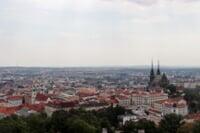
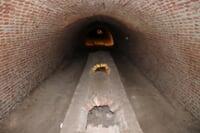
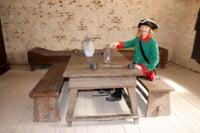
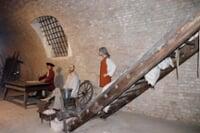
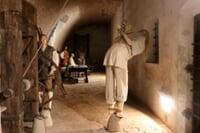
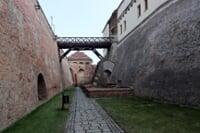
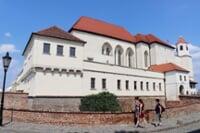
















.png)